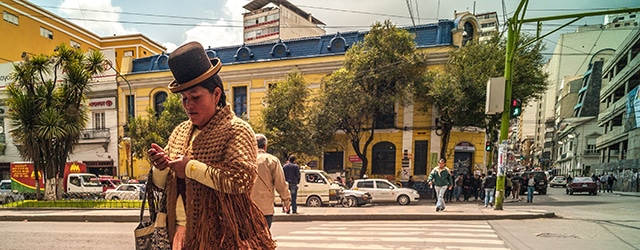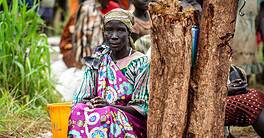Central America and the Caribbean won’t revert to normal post-Covid. Digitization, diversification and infrastructure investment are contributing to a regional transformation.

Will the world be dramatically different when the Covid-19 pandemic recedes and economies recover, or will it merely return to normal? The answer surely varies from region to region; but in Central America and the Caribbean, the Covid crisis is one of several disruptions that are likely to leave the area vastly changed.
Rising demand for information technology was already leading banks to embrace new approaches to serving their clients, even before the lockdown. While the economic impact of the pandemic has been brutal, most governments in the two regions have demonstrated the maturity to face it, in many cases backed by international and regional financial organizations. Meanwhile, investment in diversification of their production, manufacturing and public infrastructure is changing the economic landscape.
Central America will suffer a 5.9% loss of GDP in 2020, with a 3% contraction next year, the International Monetary Fund estimates. But there are exceptions. Guatemala, for example, is projected to overcome the recession in 2021, growing 5.5% in 2021 after a GDP drop of 2-2.5% this year. Like all its neighbors, the country benefited from lower oil prices and from the fact that foreign remittances did not decline as much as was calculated in the first months of the pandemic.
Except for Nicaragua, Central American governments woke up quickly to the severity of the pandemic; and those that had previously exercised strong fiscal control were able to release assistance to the most vulnerable people as well as small and medium-size companies.
Among the island nations of the Caribbean, the story is similar. The commodity export economies, including oil producers like Trinidad and Tobago and Guyana, are expected to grow 3.5% this year and 3.2% in 2021, but those economies dependent on tourism will face a harder reality. Recovery, for them, will take years; and even that will depend significantly on the advent of a Covid vaccine in enough quantity to immunize their populations and potential visitors. These economies are predicted to contract 10.3% in 2020, expand a meager 4.8% next year, and overcome the losses caused by the pandemic only in 2023.
“The new normal for both regions will be digital,” says Septimus Blake, CEO of National Commercial Bank Jamaica (NCB), which has created 10 innovation labs and has invested massively in a new digital architecture for its operations. “We will not come back to the old normal after the pandemic. Information technology will be a key driver for growth.”
Unlike earlier crises, banks will be part of the solution in this one instead of part of the problem, Blake says. Loan renegotiations and offers of easier credit to businesses in trouble will be critical, but so will remaking of the technological sector.
Consolidation of IT companies and funding of startups is being pushed largely by banks. Since the pandemic began, use of electronic operations is up 40% in Guatemala and it has tripled in El Salvador as clients have shied away from transactions in person. They are not expected to return once the coronavirus spread is under control and these economies start growing again.
“I believe this change is here to stay,” says José Eduardo Luna, CEO of El Salvador’s Banco Cuscatlan. “A huge amount of capital and entrepreneurs are interested in application developments in Central America, including electronic tools to facilitate export operations.”
E-commerce was already on a growth path in El Salvador before the pandemic, attracting companies specializing in digital marketing, instant payments, safety and other solutions. Similarly, in Guatemala, Banco Industrial increased its credit offer from 3% in 2019 to 8% in 2020, thanks especially to the rise in electronic operations, which have doubled since last year.
Infrastructure projects are another factor pointing to recovery and increasing competitiveness in Central America and the Caribbean.
Reigniting Foreign Investment
“The government of Guatemala has released four projects, and the international finance organizations are supporting them,” says Luis Lara, CEO of Banco Industrial. “Infrastructure is the key word, and it should involve both state and private sectors.” China has been raising its presence in project finance in both Central America and the islands for some time, encouraged by the good macroeconomic management of many of these governments.
Central American countries are also hopeful that foreign investment in manufacturing will shift their way as the world reallocates more of its production chains. This change could be particularly important for Honduras, Costa Rica, El Salvador and Guatemala, which are already connected to the Mexican and the American manufacturing chains and are providers of final goods to both of those markets as well as their own region.
“We see special opportunities for medium-size companies’ production,” says Justo Montenegro, CFO of Banco Lafise Bancentro, an institution present in five countries in the region.
In the middle of the pandemic, Panama took action to attract a new wave of multinational manufacturing companies, inspired by a 2007 special regime that grants tax exemptions. A bill with new measures and rules for foreign-based firms was ratified in late August as a spur to economic growth and job creation.
A financial services, transport and logistics hub, as well as a tourist destination that has generated large construction projects, Panama had previously been less willing to take strong measures against the spread of the coronavirus. But its deep connections with Colombia and Venezuela turned against it when those economies slumped. The country should face a 3% drop in its GDP this year and grow 4.5% next year, according to the government, which nevertheless expects Panama to quickly return to its high performance of preceding years.
The decline in tourism is the primary stumbling block for destinations like the Bahamas and Costa Rica. Some, like Jamaica, have tried to open their borders, with several restrictions, but failed to attract visitors from the US and Europe, whose governments are still urging citizens to avoid travel to Central America and the Caribbean.
The slow reopening of tourism business expected to begin next year may come with some changes, as local associations are pressing for renegotiation of terms with cruise ship lines, including new environmental standards and new measures to stimulate consumption on dry land.
But a tourism recovery is essential for the region. The shock to tourism caused by the pandemic has no precedent for the Caribbean, which had experienced a vast boom in this industry during recent decades. According to 2020 studies by the Inter-American Development Bank, annual tourism arrivals increased 91% for Jamaica, 73% for the Bahamas and 37% for Barbados from 2000 through 2019; and the industry accounted for between 10.5% and 19% of GDP in these three countries in 2018-2019.
In Costa Rica, a major Central American destination that resumed flight arrivals from the US in September, tourism is responsible for 13% of GDP. Abruptly impacted by the drop in the number of visitors as well as in exports, GDP for Costa Rica is expected to contract 4.2% this year before growing 3% in 2021.
Other countries were working hard to explore their tourism potential when Covid-19 suspended these projects. Guatemala had high hopes to develop the infrastructure around its Mayan cities as a tourist lure; and El Salvador was building its Surf City when it was forced to cancel the 2020 ISA World Surfing Games, scheduled for last May. Both plans are still considered viable, however, and are expected to resume when the pandemic is under control.
In another signal that much of the region is still committed to material progress, many Central American and island nations remain committed to renewable energy and environmental agendas in line with practices in the industrialized world. Even facing profound social deficits and security challenges, they are far from abandoning economic transformation.



